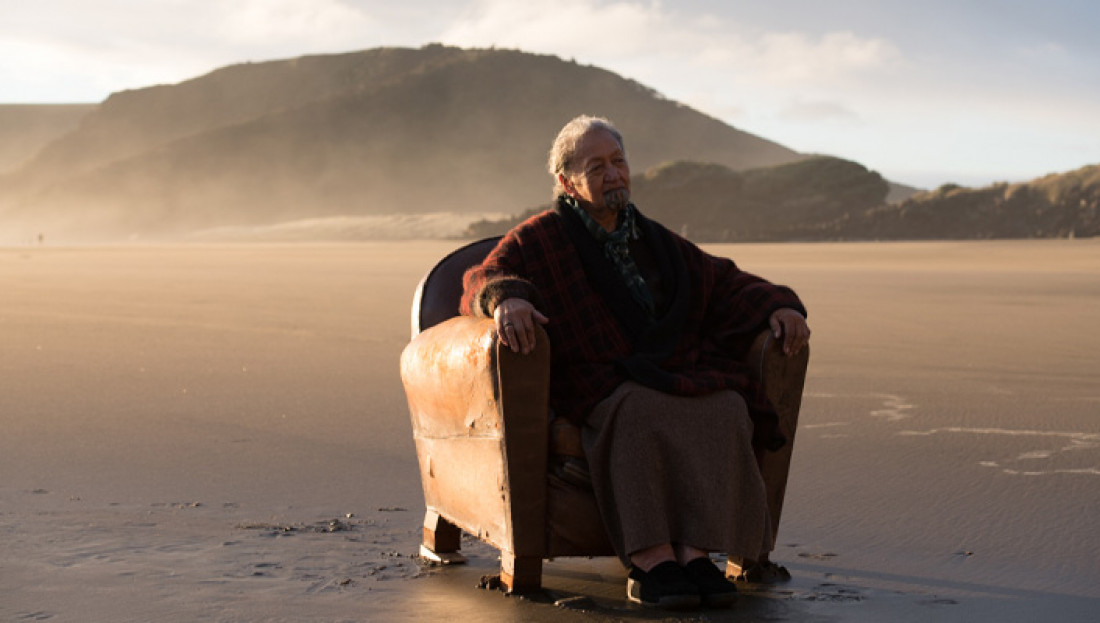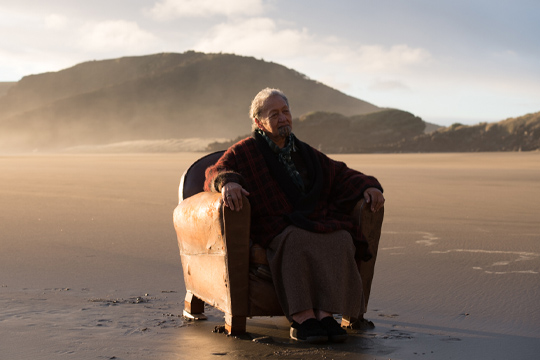The story behind our story - our kuia
Date
24 September 2018
Te Hei Tamaariki is our Kuia and central character in Ko Tātou This Is Us video. Te Hei is a real New Zealander, not an actress, and her story is real too.
For Te Hei, like many of us, our land and rivers, lakes and sea provide more than just food and resources. It’s a way of life and has shaped who we are.
Te Hei was brought up in Tāmaki Orakei (Auckland), by her grandparents, back in the late 1930s and 1940s. Her Māmā was a weaver and a gardener, a great teacher for Te Hei. They lived at Orakei Pa in Auckland, and some of her earliest memories are of her Māmā showing her how to grow and prepare her own food and medicine.
Te Hei recalls for us, "I learned how to plant the seed-beds and grow kumara from seven or eight years old. We also grew puha, that's my favourite, and watercress of course."
The memories of her childhood in New Zealand are still very clear.
"I can remember how my Kani Pāpā would put a plough behind a Model A Ford truck, and turn over a quarter-acre section to get the land ready for the golden kumara. We also planted peruperu (Māori potatoes), although you don't see those much these days."
It was tiring work. "Sometimes when the adults were picking, way down the field, I'd curl up and go to sleep beneath the leaves."
As a child, Te Hei always knew how to find kaimoana when she was away from home.
"My Māmā would go to the flax bushes and cut flax to make kono-kete baskets. Then we'd use them to gather pipi at low tide down in the estuary."
She remembers how digging in the sand would be fun, because they knew they were getting something to fill their puku.
"We learned how to bash oysters with rocks to get them off without hurting ourselves. By the time we went home we weren't hungry anymore!"
And it wasn't just food. Medicine could also be found. One of Te Hei's most treasured memories is of her Māmā teaching her to forage for the leaves of the kawakawa in a nearby forest.
Since then much has changed. Her whanau has flourished in this land of plenty.
She became a mother to nine children, all now long-since grown up, and jokes that she has lost count of all her mokopuna. She even has great-great-grandchildren to keep her busy.
The Ko Tātou This Is Us video was a family affair, with her youngest daughter Rangi and granddaughter DeArnei featuring in the story too.
Te Hei is also active in the life of her community, and loves her role as kaumatua to Taumata-ā-Iwi, in their work with Auckland Museum.
As an elder of our community, her wisdom – the things she's seen, the places she's been – is important. She has a unique perspective, after so many years living, breathing, eating and growing in New Zealand. She has seen the seasons change and the decades come and go, which brings a deeper understanding of the world around us.
The core message in Ko Tātou This Is Us video resonates with Te Hei, and with precious time passing by, the message has taken on a new urgency.
It's a message she wants to share with us all.
She understands the incredible value of being free to enjoy the bounty of our oceans, to walk barefoot through the grass, to climb trees and pick fruit. To know the food in your local café is the fresh food from around here.
This is the world Te Hei wants to pass on to her daughter, granddaughter and all other members of her large whanau, as well as all Aotearoa - New Zealand.
But it’s a way of life she knows they’ll have to be careful to protect. Her message is simple:
"Let's look around at everything we have, and appreciate it," says Te Hei. "We all need to understand how good it is here. And do what we have to in order to look after it."
That means each of us doing our bit to guard it from the pests and diseases that threaten to take it away.
As New Zealanders, Aotearoa and all that it provides us is worthy of our protection.
This is her story. And it's also all of ours. Ko Tātou This Is Us.

